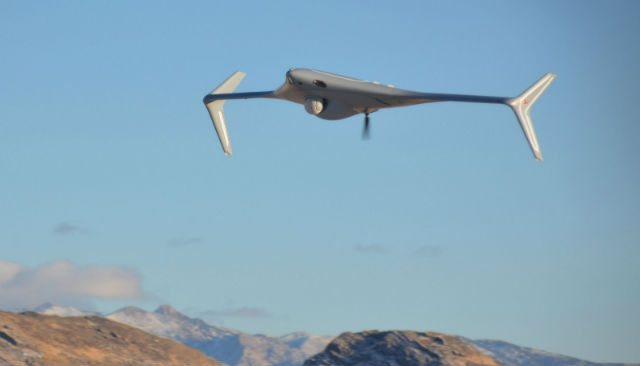Northrop Grumman has used a miniature electronic attack payload on its Bat unmanned aircraft system (UAS).
Northrop tells Flightglobal the mission, carried out at the Naval Air Weapons Station China Lake in California, demonstrates the ability of smaller unmanned aircraft to carry increasingly sophisticated payloads.
During the mission, the aircraft jammed radar using the Pandora electronic attack payload, a less expensive derivative of the Northrop’s APR-39 systems, according to a media release.
The APR-39 system is an “radar warning and electronic warfare suite” typically used on military rotary aircraft, according to Northrop’s website. It can provide laser, missile and radar warnings and can initiate countermeasures and jam radio signals.
"Bat continues to demonstrate capabilities that can normally only be achieved by larger, more expensive unmanned aircraft," says Northrop’s vice-president of medium range tactical systems George Vardoulakis in the release.

Northrop Grumman
Northrop declined to provide more details about the mission or the payload, with representatives focusing on the increasing ability of small UAS to operate sophisticated missions.
Blended-wing Bat 12 has a wingspan of 3.7m (12ft) and can carry 34kg (75lb) of payload to an altitude of 15,000ft. The larger Bat 12+2 has a 4.27m wingspan and can carry 45.4kg of payload to 17,000ft. Bat launches from a catapult and is recovered in a net, making it ideal for use by army and marine ground units, says Northrop.
The most-recent version of the aircraft benefits from upgrades that include increased power capacity and the ability to carry multiple types of payloads, the company adds.
Northrop says Bat aircraft have been deployed operationally by one customer, but declined to provide the customer’s name.
Northrop can likely sell Bat to overseas customers because its small size exempts the aircraft from export restrictions imposed by the US government on larger UAS like Northrop’s Global Hawk, Northrop tells Flightglobal.
Source: FlightGlobal.com


























